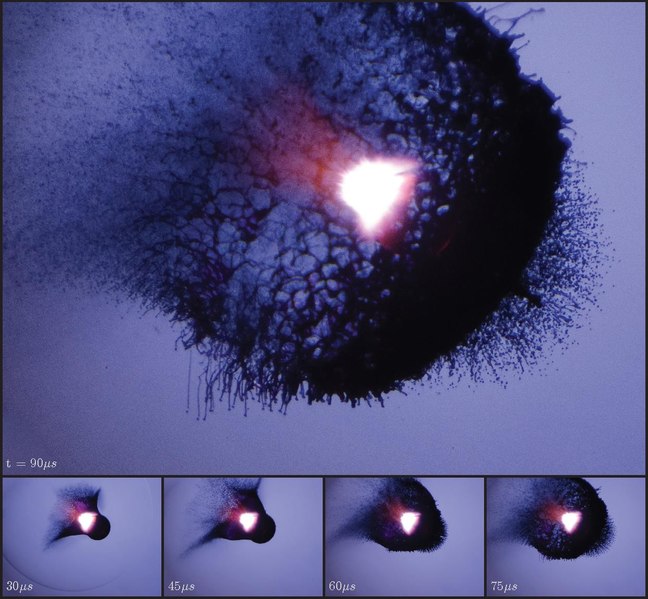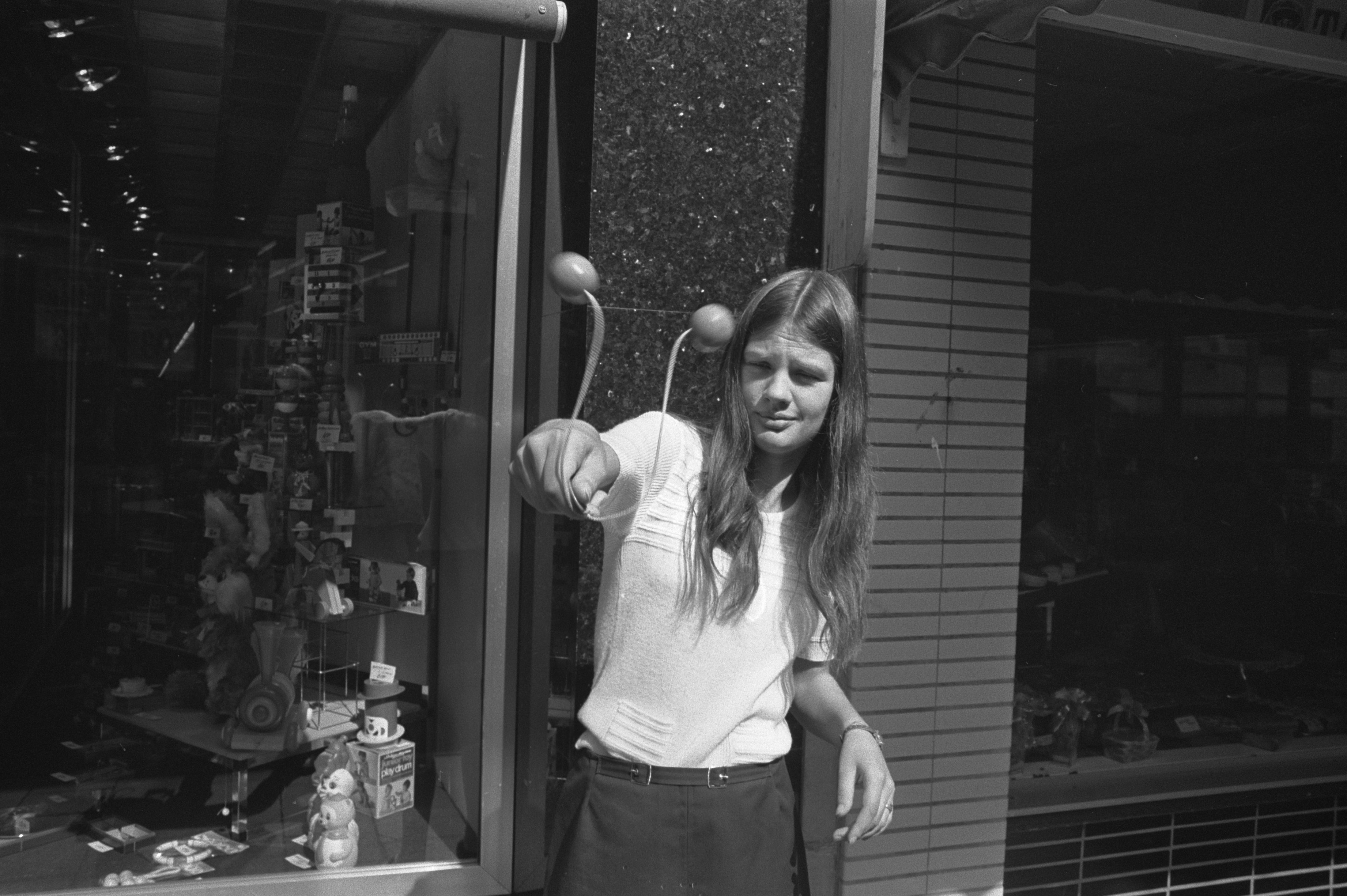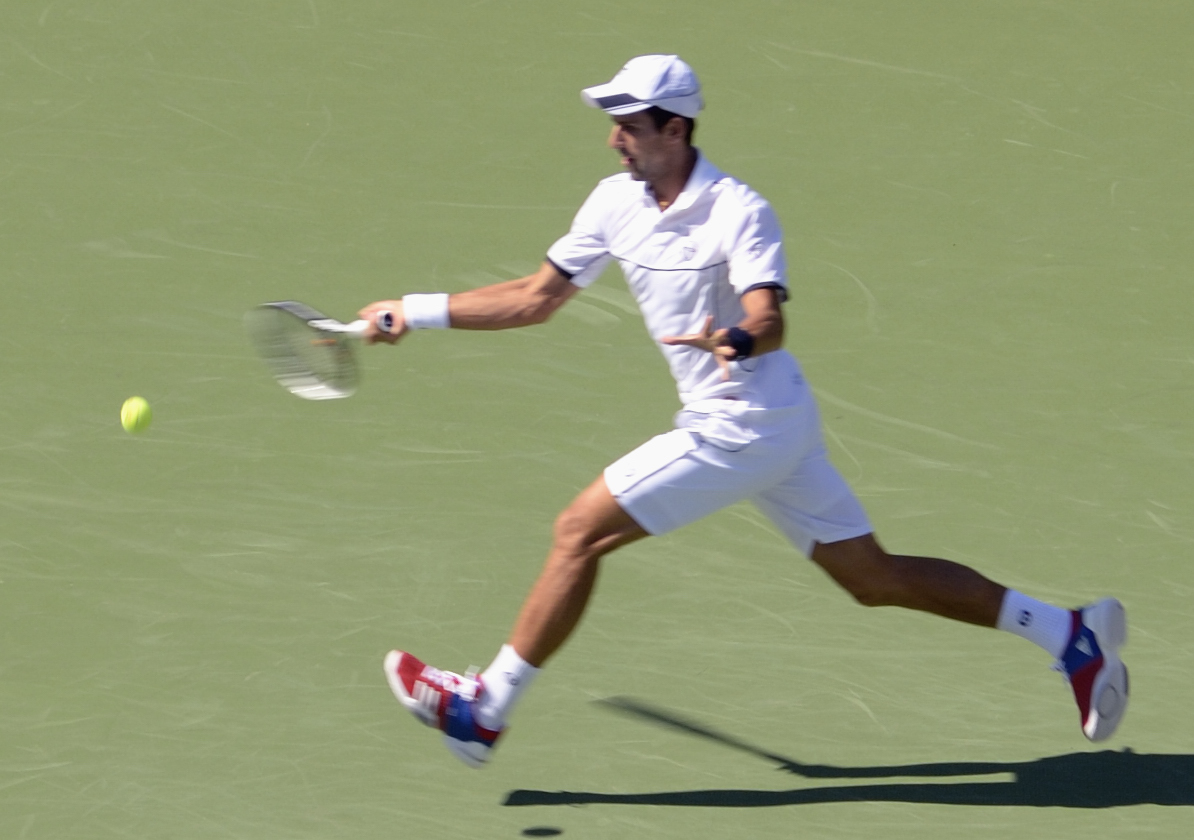This is an old revision of the document!
5. Impact of Spatial Extension
 Figure 5.1: Impact of a laser pulse on a microdrop of opaque liquid that is thus blown up;
Klein, et al, Phys. Rev. Appl.~3 (2015) 044018
Figure 5.1: Impact of a laser pulse on a microdrop of opaque liquid that is thus blown up;
Klein, et al, Phys. Rev. Appl.~3 (2015) 044018
 Figure 5.2: Girl playing with clackers.
Punt/Anefo, Amsterdam 1971, CC0
Figure 5.2: Girl playing with clackers.
Punt/Anefo, Amsterdam 1971, CC0
 Figure 5.3: Man running to return a tennis ball.
Charlie Cowins from Belmont, NC, USA, CC by 2.0
Figure 5.3: Man running to return a tennis ball.
Charlie Cowins from Belmont, NC, USA, CC by 2.0
In Chapter 4 we discussed the motion of point particles. However, in our environment the spatial extension of particles in crucial. Physical objects always keep a minimum distance due to their spatial extension. When they had zero extension, one could neither blow up water droplets by impact with a laser (Figure 5.1), nor work clackers (Figure 5.2) or hit a ball with a tennis racket (Figure 5.3). Even giving spin to a ball only works due to the distance between the surface of the racket and the center of the ball.
At the end of this chapter we will be able to discuss the evolution of balls with spin, and their reflections from flat surfaces. Why is spin of so much importance in table tennis? How can a ``Kreisläufer'' score a goal in Handball, even when the goal keeper is fully blocking he direct path to the goal?
The PDF file of the chapter is available here.
I am curious to see your questions, remarks and suggestions:
